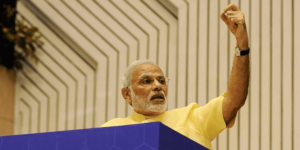The COVID-19 pandemic disrupted the world in ways no one ever imagined. It influenced consumer behaviour and preferences, shaking up the way businesses engage with consumers.
This shift presented marketers with a substantial challenge for which there is arguably no playbook. As consumer priorities change, today’s CMOs should rethink how to communicate with consumers, recalibrating their understanding of how consumers will think, feel, and behave.
CMOs will need to increasingly adopt digital tools to assess consumer sentiment at all levels and strategise better. This would unfold newer possibilities in terms of predicting customer needs and providing real-time solutions.
Effective use of technology, with an empathetic problem-solving approach, will guide the future course of action. CMOs are at the frontline of driving change, which can only happen if they are equipped to sense consumer sentiment and adapt quickly.
As businesses look ahead cautiously, here are the top priorities for CMOs to navigate successfully.
Increased agility
Speed and agility will be of the essence. Marketers rethinking consumer engagement will need to accelerate consumer insights through various sources of data.
These insights will guide improved and relevant messaging, products, and services. This approach of implementing actionable insights will help in winning new customers and nurture existing ones.
Dynamic content development can help CMOs adapt to the right messaging, often in real-time.
Greater collaboration
Siloed data sitting within individual functions or departments poses a challenge to keeping pace with changing consumer needs. Greater collaboration between different business functions will be the key to keeping pace with evolving consumer needs.
CMOs — who are deeply integrated with various business functions — will be best placed to lead such an initiative that fosters meaningful collaboration.
Brand consolidation
The COVID-19 crisis has impacted all businesses regardless of their size. Big brands are working to focus on the stronger parts of their business, while navigating the new post-COVID normal.
On the other hand, smaller brands have dealt with significant marketing budget cuts due to the economic slowdown. In the current situation, where there may be an opportunity to attack positions of market dominance, established brands have an upper hand, thanks to their awareness and brand trust.
Also, learning from 2020, businesses may invest in future-proofing brands by acquiring companies to fill a crucial capability gap.
Employee centricity
It is interesting to note that winning consumer trust starts with what you do closer to home. A recent market survey indicated that the way companies treated their employees during the pandemic was a key highlight of many brands’ narratives.
CMOs will need to spend time understanding the needs of their employees and leading with empathy. They would need to be accommodating to the needs of the employees. This would be a major differentiation between brands that are well prepared for the future and those that are not.
Since consumers have closely observed how brands have responded to the pandemic, there is an increased expectation of empathetic behaviour and societal engagement.
CMOs — who have a pulse on consumer sentiment, their changing needs, and lead their teams with empathy — will be able to succeed. In the roadmap for 2021, one thing is clear — actionable insights into consumer behaviour and preferences will dominate business.
(Disclaimer: The views and opinions expressed in this article are those of the author and do not necessarily reflect the views of YourStory.)



![Read more about the article [Funding alert] Game streaming startup Rooter raises $25M in Series A round](https://blog.digitalsevaa.com/wp-content/uploads/2022/01/Featureimages-newdeck17-1642066335772-300x150.png)
![Read more about the article [Funding alert] OYO to raise $600M from US institutional investors](https://blog.digitalsevaa.com/wp-content/uploads/2021/05/Ritesh-Agarwal-OYO-1621574676619-300x150.png)





